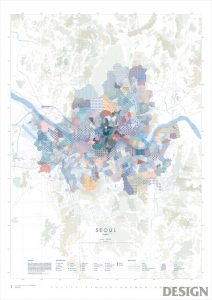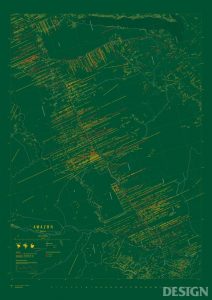//Sharon Lee
//Section E
//dayoungl@andrew.cmu.edu
//Assignment 07-C
var h = 280;
var v = 5;
var dirX = 1;
var wall1 = 60;
var wall2 = 340;
var xarray = [];
var yarray = [];
var rings = 10;
var counts = [];
var circles = [];
var xs = []
var ys = []
var is = []
function setup() {
createCanvas(400,400);
// angleMODE(DEGREES);
frameRate(8);
}
function draw() {
ripples();
for(i = 0; i< counts.length;i++){
counts[i]++;
}
if(counts[0]>rings){
counts.splice(0,1);
xarray.splice(0,1);
yarray.splice(0,1);
}
}
function ripples() {
background(100);
//rectangle
push();
rectMode(CENTER);
stroke(122,203,241);
strokeWeight(4);
noFill();
rect(width/2, height/2,h,h);
//set the number of the ripples
for (i = 0; i < xarray.length; i ++){
//draw ripples
stroke(122,203,241);
noFill();
// var m = map(mouseX, 0, width, 25, 75);
//constrain the ripples inside the square
var xc = constrain(xarray[i], wall1, wall2);
var yc = constrain(yarray[i], wall1, wall2);
xs.push(xc);
ys.push(yc);
is.push(counts[i]);
//ellipse(xc,yc,50 * counts[i], 50 * counts[i]);
}
for (i = 0; i < xs.length; i++) {
ellipse(xs[i],ys[i],50 * is[i], 50 * is[i]);
}
pop();
fill(100);
noStroke();
rect(0,0,wall1,height);
//create bounding box
//right bouding box
rect(wall2,0,wall1,height);
//left bounding box
rect(height,0,width,wall1);
//top bounding box
rect(0,0,width,wall1);
//bottom bounding box
rect(0,wall2,width,wall1);
}
function mousePressed() {
counts.push(0);
xarray.push(mouseX);
yarray.push(mouseY);
}
// function mouseDragged() {
// ripples (mouseX, mouseY);
// }

I wanted to represent ripples. As mouse is clicked, the ripples appear on the screen and overlap on top of each other.
![[OLD FALL 2017] 15-104 • Introduction to Computing for Creative Practice](../../../../wp-content/uploads/2020/08/stop-banner.png)






